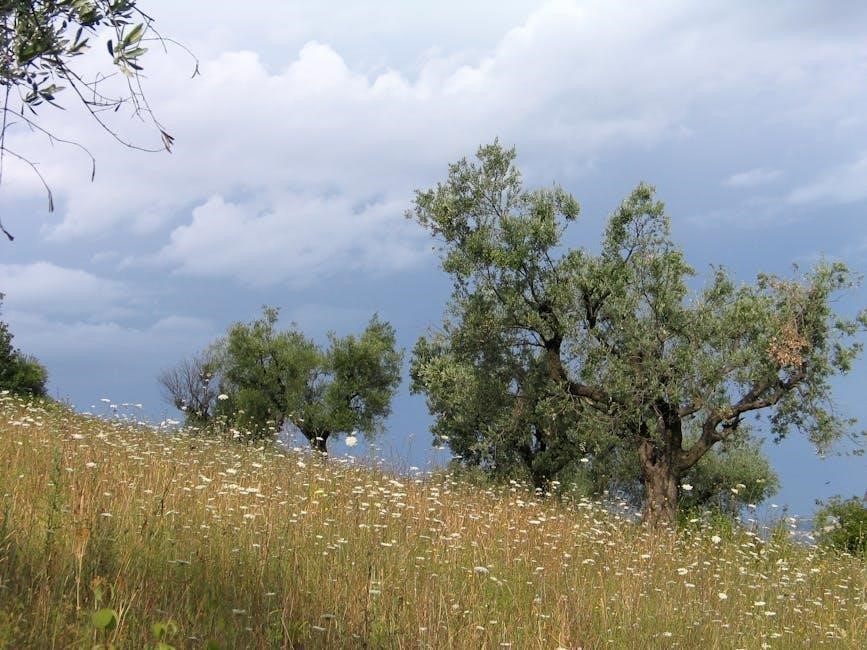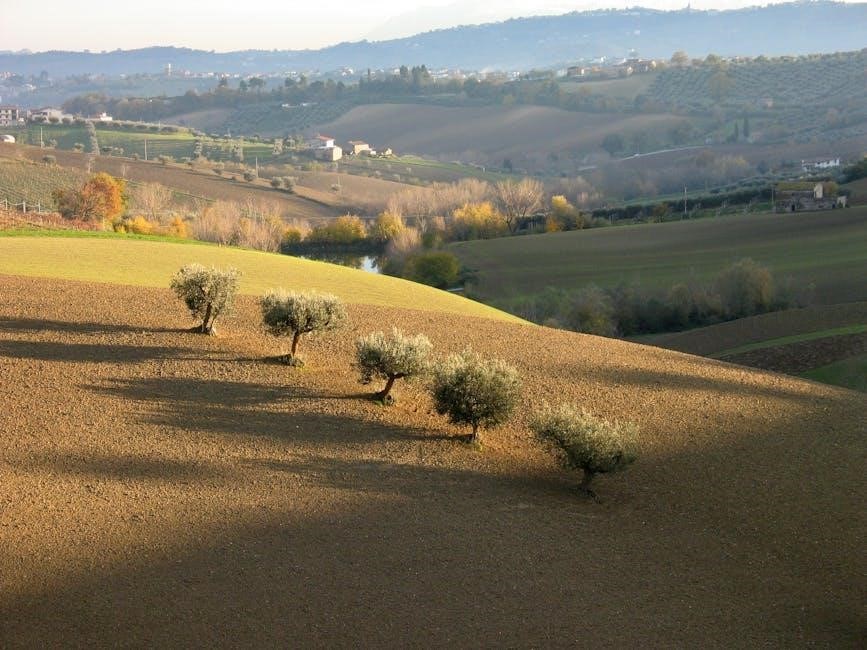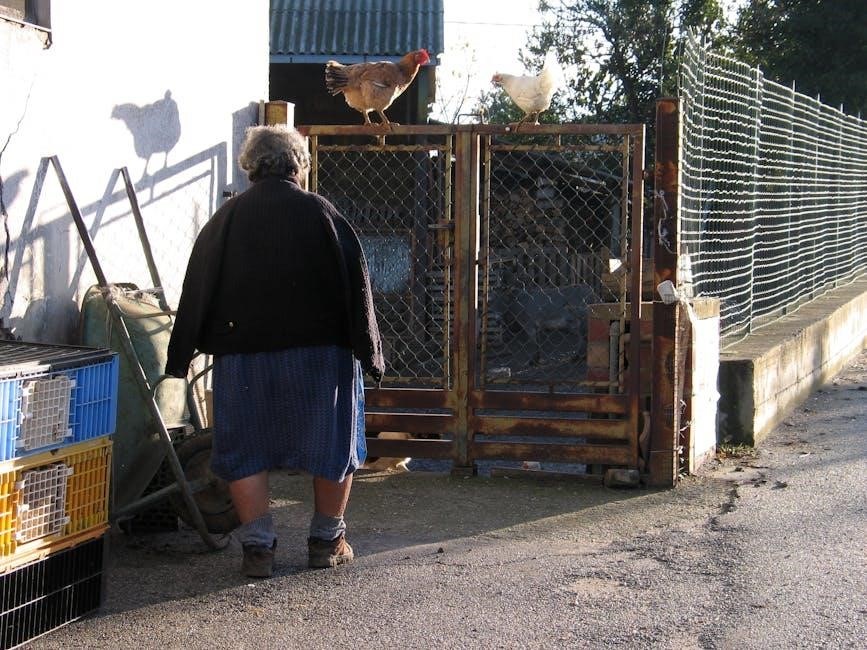History of Tenuta San Guido
Tenuta San Guido‚ founded by Marchese Mario Incisa della Rocchetta in the 1920s‚ is renowned for its pioneering role in Italian winemaking. The estate’s history began with a vision to create a unique wine‚ culminating in the debut of Sassicaia in 1968. This bold wine broke Tuscan winemaking traditions‚ establishing Tenuta San Guido as a leader in the Super Tuscan movement. The family’s commitment to innovation and quality has solidified its legacy in Italian wine culture.
1.1. The Founding and Early Years
Tenuta San Guido was founded in the 1920s by Marchese Mario Incisa della Rocchetta‚ who sought to create a unique wine in Tuscany. The estate‚ located in Bolgheri‚ began experimenting with Bordeaux grape varieties like Cabernet Sauvignon and Cabernet Franc‚ which were unconventional in the region. Initially‚ the wines were produced for family consumption. The estate spans 2‚500 hectares‚ including vineyards‚ forests‚ and agricultural land. This early period laid the groundwork for future innovations‚ establishing Tenuta San Guido as a pioneering force in Italian winemaking.
1.2. The Debut of Sassicaia in 1968
The debut of Sassicaia in 1968 marked a revolutionary moment in Italian winemaking. Produced by Tenuta San Guido‚ this bold wine broke away from Tuscan traditions by using Bordeaux varieties like Cabernet Sauvignon and Cabernet Franc. Initially labeled as a table wine due to its unconventional style‚ Sassicaia gained acclaim for its refined character and aging potential. The 1968 vintage‚ envisioned by Marchese Mario Incisa della Rocchetta‚ laid the foundation for the Super Tuscan movement and later earned the estate its own DOC designation‚ solidifying Sassicaia’s legacy as a pioneering wine.

Sassicaia: The Iconic Wine
Sassicaia is a legendary wine‚ renowned for its bold yet refined style. Crafted from Bordeaux varieties‚ it revolutionized Italian winemaking and became a global icon of excellence.

2.1. Grape Composition and Winemaking Style
Sassicaia is crafted from 85% Cabernet Sauvignon and 15% Cabernet Franc‚ sourced from the estate’s unique terroir. The grapes undergo meticulous fermentation in stainless steel tanks‚ followed by 24 months of aging in French oak barrels. This traditional yet innovative approach enhances the wine’s complexity and structure. The stony soil of Bolgheri contributes minerality and depth‚ while the winemaking process preserves the natural elegance of the fruit. This blend of power and refinement defines Sassicaia’s distinctive style‚ making it a benchmark for Super Tuscan wines.
2.2. Tasting Notes and Critical Acclaim
Sassicaia is celebrated for its rich‚ complex profile‚ offering aromas of dark fruit‚ spice‚ and subtle vanilla. Flavors of blackberry‚ cherry‚ and hints of tobacco unfold on the palate‚ supported by polished tannins and a long‚ refined finish. Critics consistently praise its elegance and power‚ with scores often reaching 98 and 100 points. The wine’s ability to age gracefully has solidified its reputation as a timeless classic‚ earning accolades from experts worldwide and cementing its status as a benchmark for Italian fine wines.
2.3. Sassicaia as a Symbol of Tenuta San Guido
Sassicaia embodies the essence of Tenuta San Guido‚ representing a harmonious blend of innovation and tradition. As the estate’s flagship wine‚ it symbolizes the pioneering spirit that led to the creation of the Super Tuscan category. Sassicaia’s acclaim underscores the estate’s commitment to excellence and its ability to redefine Italian winemaking. Its unique terroir and meticulous craftsmanship have made it an icon‚ reflecting the family’s dedication to producing wines of extraordinary quality and character. Sassicaia stands as a testament to Tenuta San Guido’s enduring legacy in the world of fine wines.

The Super Tuscan Revolution
The Super Tuscan Revolution began with Sassicaia‚ defying traditional Tuscan winemaking by blending Cabernet Sauvignon and Franc‚ creating a bold‚ innovative style that reshaped Italian wine.
3.1. Breaking Tradition in Tuscan Winemaking
Sassicaia revolutionized Tuscan winemaking by introducing Bordeaux grape varieties‚ Cabernet Sauvignon and Cabernet Franc‚ challenging the region’s reliance on Sangiovese; This bold departure from tradition‚ coupled with innovative winemaking techniques‚ created a wine that defied conventional norms. Initially met with skepticism‚ Sassicaia was classified as a simple table wine due to its non-traditional blend. However‚ its exceptional quality and pioneering spirit earned it acclaim‚ paving the way for the Super Tuscan movement. By breaking free from centuries-old winemaking practices‚ Sassicaia redefined Tuscan wine‚ establishing a new standard for innovation and excellence.
3.2. Sassicaia’s Role in Redefining Italian Wine
Sassicaia’s debut in 1968 revolutionized Italian winemaking by introducing Bordeaux varieties like Cabernet Sauvignon and Cabernet Franc. Initially dismissed as a table wine‚ its quality earned acclaim. In 1994‚ it became Italy’s first single-estate DOC‚ Bolgheri Sassicaia‚ setting a precedent. This recognition redefined Italian wine‚ proving innovative blends could achieve global success. Sassicaia inspired winemakers to experiment‚ elevating Italy’s reputation. Its success demonstrated that breaking tradition leads to excellence‚ reshaping the industry. Today‚ Sassicaia remains a benchmark‚ influencing the global market and ensuring Italy’s prominence in fine wines.

The Vineyards and Terroir
Tenuta San Guido’s vineyards span 2‚500 hectares‚ with 108 dedicated to Sassicaia. The stony‚ well-drained soil and coastal climate create a unique terroir‚ yielding wines of distinct character.
4.1. The Unique Soil and Climate of Bolgheri
Bolgheri’s terroir is characterized by stony‚ well-drained soil and a Mediterranean climate with maritime influences. The region’s unique combination of warm summers‚ cool winters‚ and coastal breezes creates optimal conditions for grape ripening. The stony soil‚ rich in limestone and gravel‚ imparts minerality and structure to the wines‚ while the climate ensures balanced acidity and aromatic complexity. This distinctive terroir is central to Sassicaia’s identity‚ fostering wines with elegance‚ depth‚ and a strong sense of place. The interplay of soil and climate in Bolgheri is unparalleled‚ making it a cornerstone of Tenuta San Guido’s winemaking success.
4.2. The Sassicaia Vineyard: A Monopole Appellation
The Sassicaia vineyard is a monopole appellation‚ meaning it is entirely within Tenuta San Guido’s estate. This unique designation highlights the vineyard’s distinct terroir and consistent quality. The stony‚ limestone-rich soil and coastal climate create a microenvironment ideal for Cabernet Sauvignon and Cabernet Franc. As the only single-estate DOC in Italy‚ Sassicaia’s monopole status underscores its rarity and prestige. This exclusive terroir‚ carefully managed by the estate‚ ensures wines of unparalleled character‚ solidifying Sassicaia’s reputation as a global wine icon.

The DOC Bolgheri Sassicaia
The DOC Bolgheri Sassicaia is Italy’s first single-estate DOC‚ recognizing Tenuta San Guido’s unique terroir and winemaking excellence. Established in 1994‚ it validates Sassicaia’s pioneering legacy.
5.1. The First Single-Estate DOC in Italy
The DOC Bolgheri Sassicaia was officially recognized in 1983‚ marking a historic milestone as Italy’s first single-estate DOC. This designation acknowledged Tenuta San Guido’s unique terroir and pioneering winemaking practices. Sassicaia‚ the iconic wine‚ became the first to receive this prestigious classification‚ solidifying its legacy. The DOC validated the estate’s commitment to innovation and quality‚ setting a new standard in Italian winemaking. This recognition not only elevated Sassicaia’s status but also influenced future wine regulations in Italy‚ ensuring its enduring impact on the world of wine.
5.2. The Significance of the Sassicaia DOC
The Sassicaia DOC is a testament to the wine’s excellence and uniqueness. As a monopole appellation‚ it underscores the exceptional terroir and winemaking practices of Tenuta San Guido. This classification not only validates Sassicaia’s role as a pioneering Super Tuscan but also elevates its status as a benchmark for quality. The DOC ensures consistency and authenticity‚ reinforcing Sassicaia’s reputation as one of Italy’s most iconic wines. Its recognition highlights the estate’s dedication to innovation and tradition‚ cementing its legacy in the world of fine wines.

Winemaking Philosophy and Techniques
Tenuta San Guido blends tradition with innovation‚ focusing on Cabernet Sauvignon and Cabernet Franc. Their meticulous winemaking ensures quality‚ reflecting the estate’s commitment to excellence and terroir expression.
6.1. Traditional Methods Meet Innovation
Tenuta San Guido masterfully combines centuries-old winemaking traditions with cutting-edge techniques. The estate meticulously manages its vineyards‚ emphasizing manual harvests and rigorous grape selection. Fermentation occurs in stainless steel tanks‚ while aging takes place in French oak barriques‚ blending modern precision with timeless practices. This harmonious approach ensures wines like Sassicaia retain their unique terroir character while achieving refined complexity. The estate’s commitment to innovation‚ such as precise temperature control and gentle extraction methods‚ enhances the natural expression of Cabernet Sauvignon and Cabernet Franc‚ solidifying its reputation as a pioneer in Italian winemaking.
6.2. The Role of Cabernet Sauvignon and Cabernet Franc
Cabernet Sauvignon and Cabernet Franc form the backbone of Sassicaia‚ with the former dominating at 85% and the latter contributing 15%. These Bordeaux varieties thrive in Bolgheri’s stony terroir‚ imparting structure‚ elegance‚ and complexity. Cabernet Sauvignon provides robust tannins and dark fruit flavors‚ while Cabernet Franc adds subtle spice and aromatic nuance. Their harmonious blend creates a wine with remarkable aging potential‚ showcasing the synergy of traditional grape varieties in a modern‚ innovative context. The careful balance of these grapes is central to Sassicaia’s identity and its acclaim as a world-class wine.

Legacy and Impact
Sassicaia revolutionized Italian winemaking‚ pioneering the Super Tuscan movement and inspiring global recognition. Its influence elevated Bolgheri to prominence and set new standards for quality and innovation in wine.
7.1. Sassicaia’s Influence on Modern Italian Wine
Sassicaia’s groundbreaking debut in 1968 reshaped Italian winemaking by introducing Bordeaux-style blends‚ challenging traditional Tuscan methods. Its success inspired a wave of Super Tuscan wines‚ elevating Italy’s global wine reputation. Sassicaia’s innovative use of Cabernet Sauvignon and Cabernet Franc demonstrated the potential of non-traditional grape varieties in Italy. The wine’s structured‚ elegant style influenced modern winemaking techniques‚ while its acclaim encouraged other producers to experiment and innovate. Today‚ Sassicaia remains a benchmark‚ symbolizing Italy’s ability to craft world-class wines that blend tradition with modernity.
7.2. Tenuta San Guido’s Contribution to Wine Culture
Tenuta San Guido has profoundly shaped wine culture by pioneering the Super Tuscan movement and elevating Italy’s global wine reputation. As the first estate to earn a single-vineyard DOC‚ it set a precedent for quality and innovation. Beyond Sassicaia‚ the estate produces Guidalberto and Le Difese‚ showcasing its versatility. By blending tradition with modern techniques‚ Tenuta San Guido has inspired winemakers worldwide. Its commitment to excellence and terroir-driven wines has fostered a deeper appreciation for Italian wine‚ cementing its legacy as a cultural and culinary icon.